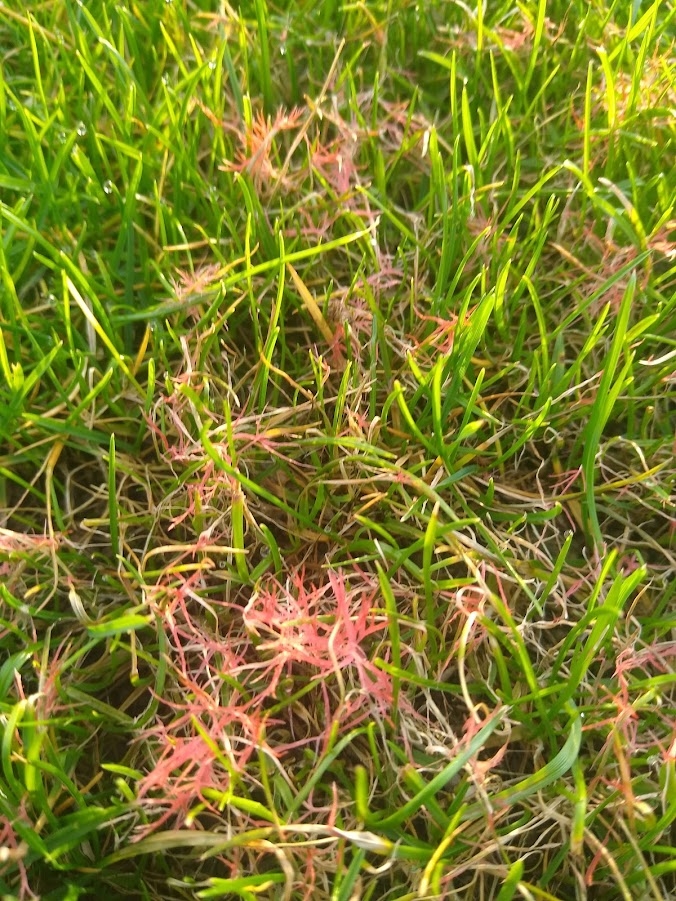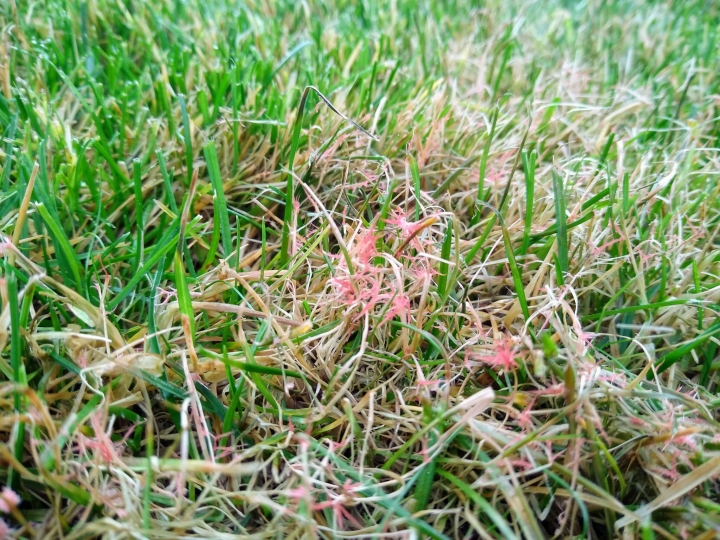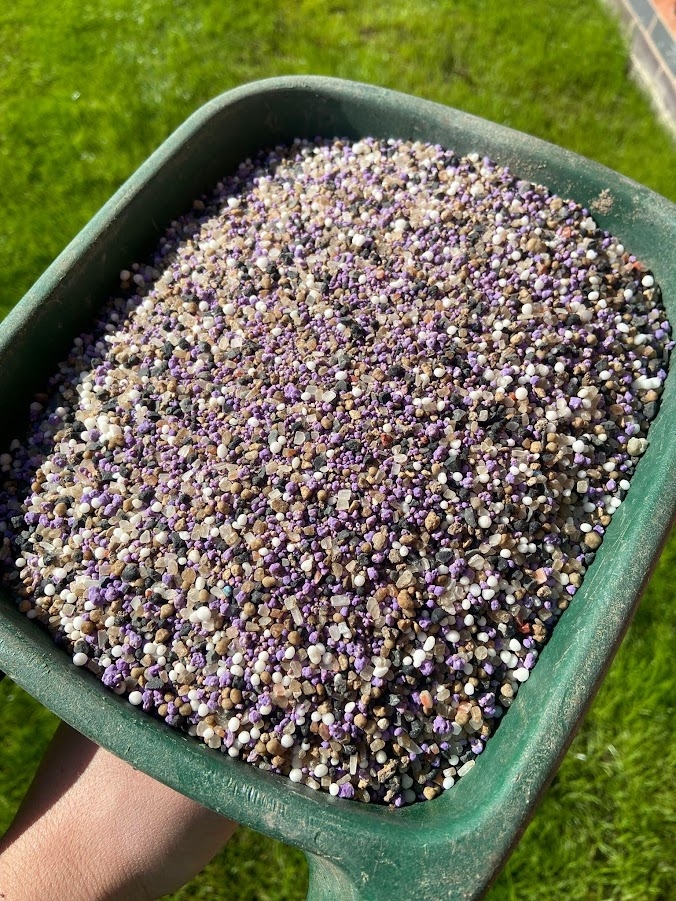Is Red Thread in Lawns Worth Worrying About?
Red thread is the most common turf disease in the UK. It will impact a wide range of turf surfaces from sports grounds to the common lawn. This post aims to provide an insight as to what is going on, and what can be done.
What is Red Thread?
Red thread is a fungal disease which attacks the grass plant when conditions suit its development. It will show up as pink / red fungus attaching itself to grass leaves while the disease is active. When the attack passes it will leave straw coloured, disfigured patches of grass leaves behind.
Red thread lawn disease requires warm and wet conditions to form. When conditions are still and humid, this disease can enter the tips of the grass plant when they are sat wet.
Being very conditions dependent, red thread favours damp summer conditions, but it can occur almost all year around - as late as a mild November / early December.
As our climate becomes increasing unpredictable, with dry periods for weeks at a time and heavy rainfall events, we have noticed increasing red thread disease in lawns in recent years.

Is There a Treatment for Red Thread in Lawns?
It's important to understand that if conditions are extreme, a limited amount of red thread is going to be present in any lawn – much like moss over winter if the weather is wet enough. There is a number of things which will tip the balance in our favour however when it comes to combating red thread lawn disease. Our aims are to reduce it's occurrence and when an attack does arrive, the lawn is able to thrive quickly on the other side.
1) A MUST - Consider Your Mower
Red thread enters the grass plant via damaged leaves and not all mowers are of the same quality.
Cylinder mowers cut the grass in a scissor like fashion, as commonly seen on sports grounds with the cutting mechanism and grass box out-front. These machine are more expensive to purchase and maintain, and require a flat lawn being cut frequently for the best results. A higher maintenance machine for a superior lawn.
Rotary mowers are far more popular in most lawn care settings. These machines cut the grass with a single downward facing blade by bashing it, achieving less cuts per square metre. To be a little bit harsh, they're a bit like using a strimmer to cut the grass with a more consistent height of cut.

With this considered, if your mower isn't razor sharp in a warm and wet period with plenty of mowing to be done, this will tear the tip of the leaf and allow a simpler passage for the disease to enter your lawn. This is common when red thread is rife. A close inspection of the grass blades will be enough to tell you how your mower is performing. If you find a discoloured, frayed tip of the leaf (such as within this image) then a sharpening of the blade or a full service of your mower is most likely due.
2) A MUST - Consider Shade, Air Movement and Aeration
Both fusarium and red thread disease in lawns enjoys mild, damp conditions. Aside from taking a hairdryer to your lawn, consider the surroundings and lawn aeration. This will aid both disease pressure and is also ideal for moss prevention during the longer periods of both short days and wet weather. We find that along with factors already mentioned, lawns which have poor air movement on all sides can struggle greatly with red thread, all the more so if the lawn is in a sunken area of the garden.
It is rare that we find red thread on front lawns, it is nearly always on rear lawns with the house on one side, with fencing and hedges surrounding the other three sides of the lawn.
Lawn aeration is a fantastic preventative measure for many lawn problems, while stimulating soil life and root growth. Adequate air to the roots is vital for the success of any plant, including grass. If your lawn has been aerated in the last 12 months:
- The lawn will deal with heavy rainfall better, which red thread needs to thrive
- The lawn will have a stronger root system, allowing a quicker recovery from perfect red thread conditions
This image shows active red thread disease at Ambleside Cricket Club, Nuneaton in November. A heavy clay soil, perfect weather conditions and recent cutting with a rotary mower are all factors in the success of the disease - it's glowing!

3) Consider Grass Types in Your Lawn to Combat Red Thread
Not all grass species are the same...
A ryegrass dominated lawn will have a very upright growth habit and produce less thatch. A lawn which has gained our Lawn Repair and Renovation service in recent months will have very little thatch, recently aerated soil, and the seed sown will be made up of the latest grass cultivars, often with a blend of fine ryegrasses and creeping red fescue (a common grass type, it's still green rather than red!). Due to this combination, we experience less red thread disease in these lawns.
Older lawns, those which are heavy with fescue and bent grasses are open to greater disease pressure. As fescue produces more thatch, these lawns will require scarifying on an annual basis. Their lateral growth habit is ideal on a golf or bowling green, but in lawns can allow disease to spread more freely. These finer grasses will struggle in drier conditions also as we saw in the summer drought.
If red thread disease is a problem, we would recommend speaking with your lawn care service with regards to the current make up of grasses in your lawn, and they should be able to advise as to if this should be altered to a more suitable make up. When lawns are turfed this is very rarely considered.
Treatment for Red Thread in Lawns
Best Lawn Fertiliser for Red Thread...?
The nutrition a lawn requires to avoid red thread disease is a much-debated point.
What we do know is that a lawn which is either over-fed, or under-fed is at much higher risk of red thread disease.
All lawn maintenance programs should include a balance of all major and minor nutrients. Over-applications of nitrogen for example is going to encourage too much 'soft growth', producing weak and floppy grass leaves which is susceptible to disease. We apply balanced, semi-organic fertilisers all year around which do not deliver a huge sugar rush of nutrient to the lawn in one go, but provides value to your lawn all year around.
The use of organic nutrition sources, and products which simulate microbial activity in the soil will provide additional vigour to a lawn, and allow it to cope with and recover from stresses. We believe in a pro-active, sustainable approach to lawn care, rather than reactive use of fungicides which cause harm to the soil food web. Red thread doesn't kill the grass, so reaching for a fungicide in a lawn care situation we deem as an overreaction.
In 2022 we introduced a new treatment - our Stress Buster applications with the goal of reducing the impact of both drought and disease stress through the use of a tank-mixed liquid cocktail of bio-stimulants and wetting agents.

Is There A Treatment for Red Thread for Now?
Both long term and short term fixes for red thread disease are everywhere! We would recommend our Stress Buster Application combined with a granular fertiliser given the range of nutrients included. Red Thread disease only harms the grass leaves and not the roots, so we are able to 'grow it out' with the correct products and some patience.
The use of liquid iron and / or magnesium within a lawn feed will green up the lawn, masking the disease until the conditions become more seasonal again. There are quick fixes, but it's important to address the cause to prevent this becoming a recurring theme every time we get heavy rainfall. We don't want you to be dealing with a discoloured lawn on a regular basis!
Red Thread - Can We Help?
If your lawn is struggling with red thread, we'd be more than happy to investigate the causes and put together a corrective plan of action with you. We can guarantee that you will see results against red thread at any time of year with our lawn treatment service.
